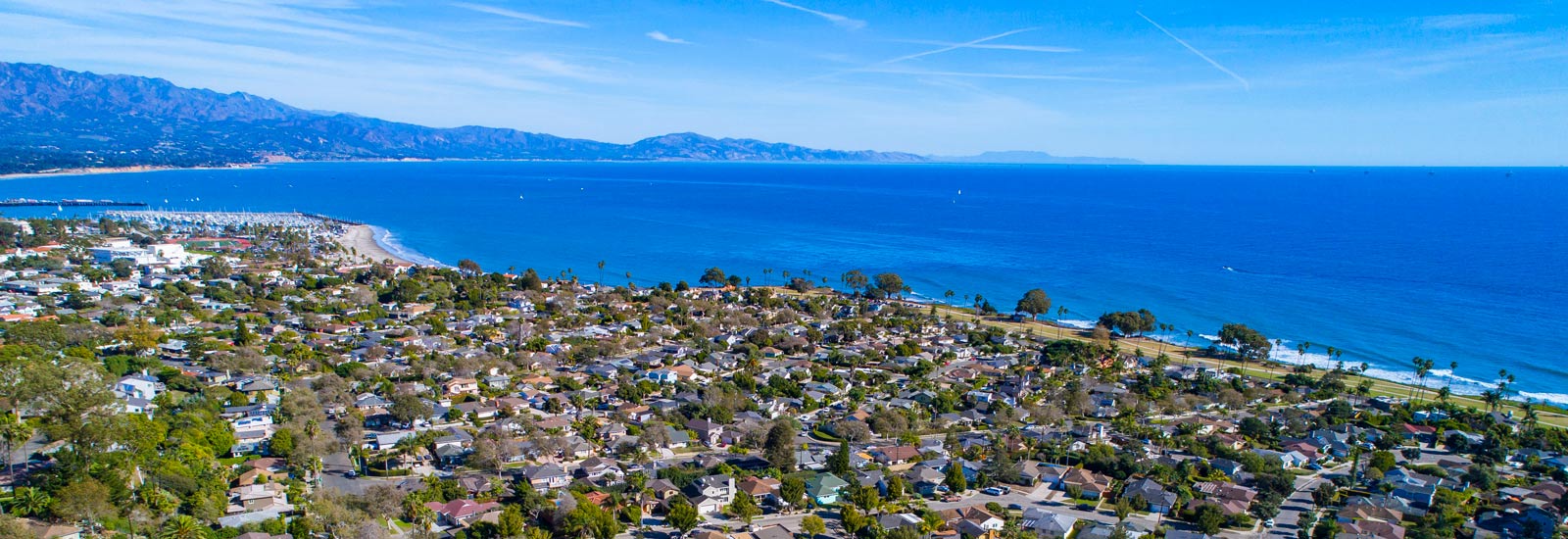The Mesa
Called the Mesa (the Spanish word for “table” or “plateau”), due to the oceanside bluff that makes up this neighborhood sits on, the Mesa is one of Santa Barbara’s later developed neighborhoods.
Hugging the coast from the harbor to Arroyo Burro Beach, and flanked on the south by the Pacific and the north by small hills, Mesa real estate is comprised of mostly single-family homes and some condominiums. The style of the Mesa is considered “casual beach” with its mix of professionals, students, surfers, and beachgoers that create a sense of carefree sophistication.
It is home to the area’s only lighthouse and is in proximity to the beautiful campus of Santa Barbara City College. With its breathtaking ocean views, Shoreline Park is the Mesa’s recreation gem, making it a perfect setting for picnics and scenic strolls.
The Mesa also exists in a microclimate of sorts with temperatures approximately 10 degrees cooler in the summer and 10 degrees warmer in the winter, which can be alluring to some home seekers.
Mesa History
For decades the Mesa was sparsely settled, with only a few farmers tilling its soil. The Chumash had villages at both ends of the Mesa, at Arroyo Burro and the heights overlooking today’s harbor, but the stretch of land in between remained uninhabited.
When the Spanish arrived in 1782, they did not establish any settlement other than an outpost on the bluffs overlooking the harbor.
The Mesa remained mostly undisturbed until shortly after Santa Barbara incorporated as an American city in 1850. During this decade the federal government decided to build a series of lighthouses along the California coast and a site was selected for Santa Barbara about one mile east of Arroyo Burro.
The coal-oil light went into operation in December 1856, but the lighthouse was in an isolated spot; the nearest fresh water supply was a mile away, and roads were few and crude. In 1865, Julia Williams became the lighthouse keeper, and for the next forty years, she lit the lamp nightly and faithfully maintained the station. She finally relinquished her post in 1905, when a fall incapacitated her. The lighthouse was wrecked in the 1925 earthquake and was replaced by an automated light.
During the last half of the 1800s, the Mesa became, as author Walker Tompkins put it, “a crazy quilt of farms ranging from 20 to over 200 acres.” A wide variety of crops were grown, although beans seemed to be a staple. One of the principal landowners in the area was Charles Potter Low. His farm was located about where Shoreline Park is today.
The discovery of oil in the vicinity of Flora Vista Drive in 1922 by the Puritan Oil Company set off a brief flurry of speculation. Derricks sprouted throughout the Mesa, but the oil brought up was of very poor quality. The most productive well, near Mesa Lane, produced less than 30,000 barrels and was shut down after only a year. Drilling continued haphazardly into the 1930s, but by the end of the decade the Mesa’s “oil boom” had come to a close. The last lone well shut down in 1971.
By the end of World War II, the housing shortage in Santa Barbara was reaching critical levels. Marine Terrace, the first housing subdivision on the Mesa, located on Captain Low’s old farm, was laid out in the late 1940s. Once shunned due to its relative isolation and cooler temperatures, the Mesa was soon to become one of the city’s most desired neighborhoods.
